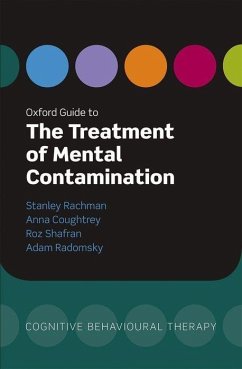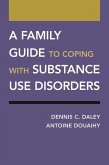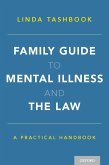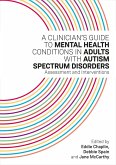- Broschiertes Buch
- Merkliste
- Auf die Merkliste
- Bewerten Bewerten
- Teilen
- Produkt teilen
- Produkterinnerung
- Produkterinnerung
A fear of contamination drives the most common manifestation of obsessive compulsive disorders (OCD) - compulsive washing. This book provides a detailed account of the nature and causes of the various forms of a fear of contamination and their consequences, written by leading experts in the field.
Andere Kunden interessierten sich auch für
![Oxford Companion to Emotion and the Affective Sciences Oxford Companion to Emotion and the Affective Sciences]() David SanderOxford Companion to Emotion and the Affective Sciences62,99 €
David SanderOxford Companion to Emotion and the Affective Sciences62,99 €![The Oxford Handbook of Singing The Oxford Handbook of Singing]() The Oxford Handbook of Singing80,99 €
The Oxford Handbook of Singing80,99 €![The Oxford Handbook of Cognitive Neuroscience The Oxford Handbook of Cognitive Neuroscience]() The Oxford Handbook of Cognitive Neuroscience133,99 €
The Oxford Handbook of Cognitive Neuroscience133,99 €![A Family Guide to Coping with Substance Use Disorders A Family Guide to Coping with Substance Use Disorders]() Dennis C DaleyA Family Guide to Coping with Substance Use Disorders41,99 €
Dennis C DaleyA Family Guide to Coping with Substance Use Disorders41,99 €![Family Guide to Mental Illness and the Law Family Guide to Mental Illness and the Law]() Linda TashbookFamily Guide to Mental Illness and the Law57,99 €
Linda TashbookFamily Guide to Mental Illness and the Law57,99 €![A Practical Guide to Functional Assessment and Treatment for Severe Problem Behavior A Practical Guide to Functional Assessment and Treatment for Severe Problem Behavior]() A Practical Guide to Functional Assessment and Treatment for Severe Problem Behavior163,99 €
A Practical Guide to Functional Assessment and Treatment for Severe Problem Behavior163,99 €![A Clinician's Guide to Mental Health Conditions in Adults with Autism Spectrum Disorders A Clinician's Guide to Mental Health Conditions in Adults with Autism Spectrum Disorders]() A Clinician's Guide to Mental Health Conditions in Adults with Autism Spectrum Disorders56,99 €
A Clinician's Guide to Mental Health Conditions in Adults with Autism Spectrum Disorders56,99 €-
A fear of contamination drives the most common manifestation of obsessive compulsive disorders (OCD) - compulsive washing. This book provides a detailed account of the nature and causes of the various forms of a fear of contamination and their consequences, written by leading experts in the field.
Hinweis: Dieser Artikel kann nur an eine deutsche Lieferadresse ausgeliefert werden.
Hinweis: Dieser Artikel kann nur an eine deutsche Lieferadresse ausgeliefert werden.
Produktdetails
- Produktdetails
- Verlag: Hurst & Co.
- Seitenzahl: 222
- Erscheinungstermin: 13. Januar 2015
- Englisch
- Abmessung: 231mm x 152mm x 15mm
- Gewicht: 340g
- ISBN-13: 9780198727248
- ISBN-10: 0198727240
- Artikelnr.: 47869631
- Herstellerkennzeichnung
- Libri GmbH
- Europaallee 1
- 36244 Bad Hersfeld
- gpsr@libri.de
- Verlag: Hurst & Co.
- Seitenzahl: 222
- Erscheinungstermin: 13. Januar 2015
- Englisch
- Abmessung: 231mm x 152mm x 15mm
- Gewicht: 340g
- ISBN-13: 9780198727248
- ISBN-10: 0198727240
- Artikelnr.: 47869631
- Herstellerkennzeichnung
- Libri GmbH
- Europaallee 1
- 36244 Bad Hersfeld
- gpsr@libri.de
Professor Rachman, is a leading clinical researcher and has numerous publications---journal articles, books and chapters in edited books. He is Emeritus Professor at the University of British Columbia and the Institute of Psychiatry, is Fellow of the Royal Society of Canada and a member of the British Psychological Society where he was awarded the BPS Lifetime Achievement Award. Dr Anna Coughtrey is a clinical psychologist and a clinical tutor at the University of Reading. The focus of Dr Coughtrey's research is on the advancement of cognitive behavioural therapy for obsessive-compulsive disorder and mental contamination and she has a number of publications in this area. Dr Coughtrey works clinically and provided supervision in the NHS and in university settings. Dr. Radomsky is Professor of Psychology at Concordia University and Co-Editor-In-Chief of the Journal of Behavior Therapy and Experimental Psychiatry. He is the director of the Anxiety and Obsessive-Compulsive Disorders Laboratory at Concordia, where he studies cognitive and behavioural approaches to understanding and treating obsessive-compulsive disorder (OCD), anxiety disorders, and related problems. He has received institutional, national and international awards for his research and has published a number of peer-reviewed articles and book chapters related to his work in the domains of experimental psychopathology and treatment development. Professor Radomsky is a frequently invited speaker at national and international conferences, and has a small private practice in which he works with individuals seeking help for OCD and related problems. Roz Shafran is Professor of Translational Psychology at University College London and founder of the Charlie Waller Institute of Evidence-Based Psychological Treatment. Her clinical and research interests include cognitive behavioural theories and treatments for anxiety disorders, eating disorders and perfectionism across the age range. She also has an interest in dissemination and implementation of psychological treatments. She has over 120 publications. She is an associate editor of Behaviour Research and Therapy, recipient of an award for Distinguished Contributions to Professional Psychology from the British Psychological Society and Trustee of the Charlie Waller Memorial Trust.
Part 1: Phenomena of Contamination Fears
1: Clinical fears of contamination
2: Features of contact and mental contamination
3: Case illustrations of contact and mental contamination
4: Mental contamination
5: Case illustrations of various forms of mental contamination
6: A cognitive theory of contamination fears and compulsive washing
Part 2: Cognitive-Behavioural Treatment of Mental Contamination
7: Assessment and formulation of mental contamination
8: Overview of cognitive behavioural treatment of mental contamination
9: Case illustrations of cognitive behavioural methods
10: Contamination after physical or psychological violations
11: Case illustrations
12: Self-contamination
13: Case illustrations
14: Morphing
15: Case illustrations
16: Visual contamination
17: Case illustrations
18: Case series
19: Clinical and Research Implications
Toolkit
1: Clinical fears of contamination
2: Features of contact and mental contamination
3: Case illustrations of contact and mental contamination
4: Mental contamination
5: Case illustrations of various forms of mental contamination
6: A cognitive theory of contamination fears and compulsive washing
Part 2: Cognitive-Behavioural Treatment of Mental Contamination
7: Assessment and formulation of mental contamination
8: Overview of cognitive behavioural treatment of mental contamination
9: Case illustrations of cognitive behavioural methods
10: Contamination after physical or psychological violations
11: Case illustrations
12: Self-contamination
13: Case illustrations
14: Morphing
15: Case illustrations
16: Visual contamination
17: Case illustrations
18: Case series
19: Clinical and Research Implications
Toolkit
Part 1: Phenomena of Contamination Fears
1: Clinical fears of contamination
2: Features of contact and mental contamination
3: Case illustrations of contact and mental contamination
4: Mental contamination
5: Case illustrations of various forms of mental contamination
6: A cognitive theory of contamination fears and compulsive washing
Part 2: Cognitive-Behavioural Treatment of Mental Contamination
7: Assessment and formulation of mental contamination
8: Overview of cognitive behavioural treatment of mental contamination
9: Case illustrations of cognitive behavioural methods
10: Contamination after physical or psychological violations
11: Case illustrations
12: Self-contamination
13: Case illustrations
14: Morphing
15: Case illustrations
16: Visual contamination
17: Case illustrations
18: Case series
19: Clinical and Research Implications
Toolkit
1: Clinical fears of contamination
2: Features of contact and mental contamination
3: Case illustrations of contact and mental contamination
4: Mental contamination
5: Case illustrations of various forms of mental contamination
6: A cognitive theory of contamination fears and compulsive washing
Part 2: Cognitive-Behavioural Treatment of Mental Contamination
7: Assessment and formulation of mental contamination
8: Overview of cognitive behavioural treatment of mental contamination
9: Case illustrations of cognitive behavioural methods
10: Contamination after physical or psychological violations
11: Case illustrations
12: Self-contamination
13: Case illustrations
14: Morphing
15: Case illustrations
16: Visual contamination
17: Case illustrations
18: Case series
19: Clinical and Research Implications
Toolkit








